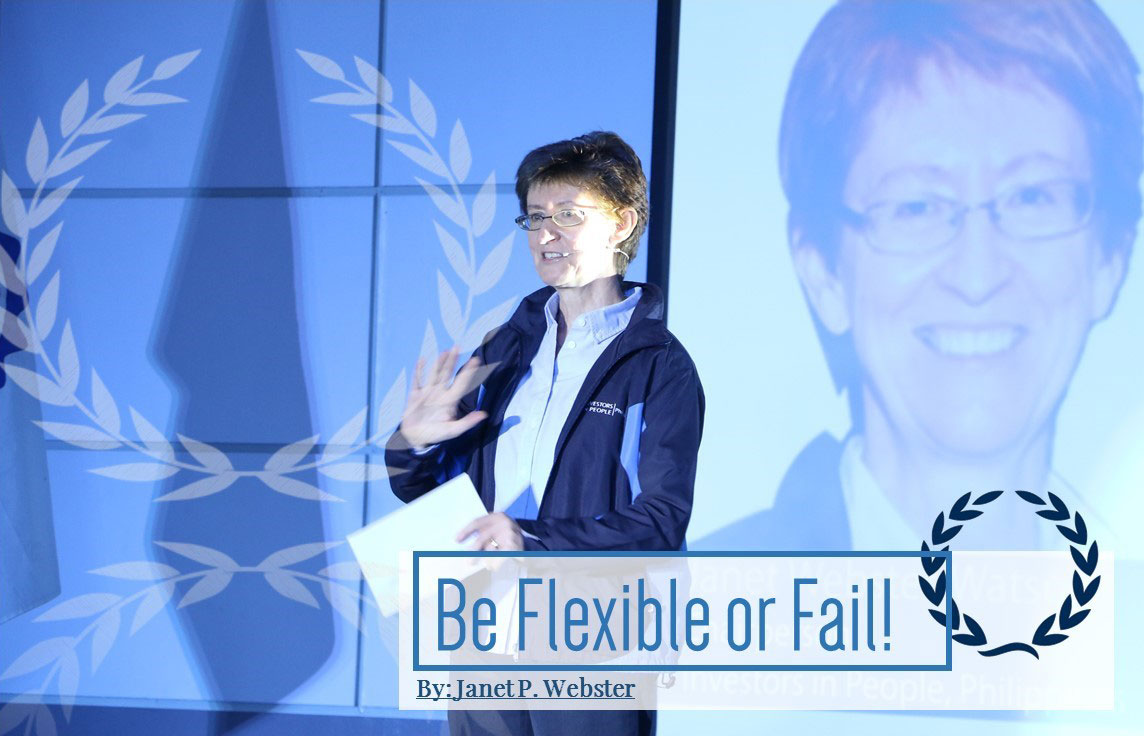Driven by Business Needs
One could argue that the more concerned we become about meeting the needs of our people, the more flexible we become. Roland Davies from the British Council in Singapore spoke recently about leadership and diversity at a Philippines Civil Service Institute leadership seminar. Someone asked if positive discrimination was fair. Roland replied with a story about assessment, where everyone was set the same task. The candidates included a monkey, a fish, a seal, a penguin and a dog, and the task was to climb a tree. Of course we are all human beings, but we are all different, and so are our skills and abilities and needs. The more we want people to be satisfied with their employer, the more we have to look at individual reeds and the more flexible we need to be. It’s not only to improve employee satisfaction though. Flexibility is also being driven by the speed of change and the need to keep up and ideally be ahead.
Flexibility in Job Design
The traditional approach to job design is to create a fixed description of the job holder’s main purpose, duties and responsibilities, probably the reporting relationships, and these day, maybe the competencies. It does clarify what the job is all about, and it may help to differentiate one job from another, although not so much if you have several people with the same job description. Some organizations include objectives. While this seems like a very good idea, it immediately changes the fixed nature of the job description, as even in the slowest changing business environments, objectives must change at least annually.
Then there is job crafting, which management writers are saying improves motivation, job satisfaction and performance. To really benefit, jobs need to be flexible, and we need to give people some freedom to design their job in a way that works for them. (See our article on job crafting!)
Finally, how do you account for people’s growth in job design? It can’t always be that they are promoted, so ideally the way jobs are designed should be flexible enough to not only allow, but encourage growth. All these things point to the need for something more flexible than the traditional job description.
Flexibility in Managing Performance
So many major organizations are taking a serious look at their performance management systems. Names like Deloitte, Adobe, IBM, Sears, and more are saying there is a better way to develop and motivate people than the traditional, mainly annual, process of setting objectives, maybe with a mid-term review, then evaluating performance of the end of the year.
Deloitte say they spent 2 hours of management time a year in performance review with no clear benefit. Other organizations, such as Accenture, say they need a system that develops people very fast, and reviewing their performance once a year doesn’t fit that bill. Sears need excellent team work between front and back offices, which an individually oriented performance management system doesn’t address.
Given that performance appraisal dates back to WWI, a change does seem to be in order. The response has greater flexibility. These organizations, and actually many of the IiP accredited organizations in the Philippines are replacing, or significantly supplementing, the annual review with regular check-ins. This, in itself, vastly increases flexibility. It means people and supervisors can focus on the present and the future performance, instead of the past. It means there is an opportunity for continuous learning and coaching. Hence the more pressing need for managers to be coaches. Everything becomes more fluid, with frequent opportunities for helping people to improve their performance and build their capabilities. Deloitte developed a unique approach to determining salary increases, bonuses and readiness for promotion, so the concerns around this, if there is no annual review, go away. (See Harvard Business Review’s article entitled ‘Reinventing Performance Management’).
Then there is learning.
Making Development Flexible
If we make jobs and performance management flexible, learning and development naturally follows. It doesn’t really make sense for performance management to be a continuous process, and still plan learning and development on an annual basis. In the Investors in People standard the more advanced organizations can show that learning is flexible and innovative. This follows naturally from having frequent conversations with people about what they need next to help them fulfil their potential. Once that conversation become monthly say, and it’s focused on each individual and how they are developing, flexible and innovative solutions is the natural consequence.
Do we really have a choice?
Becoming increasingly flexible in all these HR processes is an indication, in the Investors in People standard, that an organization is performing better than most.
The days of employing people in one job and expecting them to do it for years have gone. Other business processes, such as planning and project management are moving to faster and shorter cycles. Daily huddles are replacing monthly team meetings. Human Resource management has to change too, and ideally lead the way. The logic is clear. HR practice will have to be flexible or fail our organizations and our people.


0 Comments